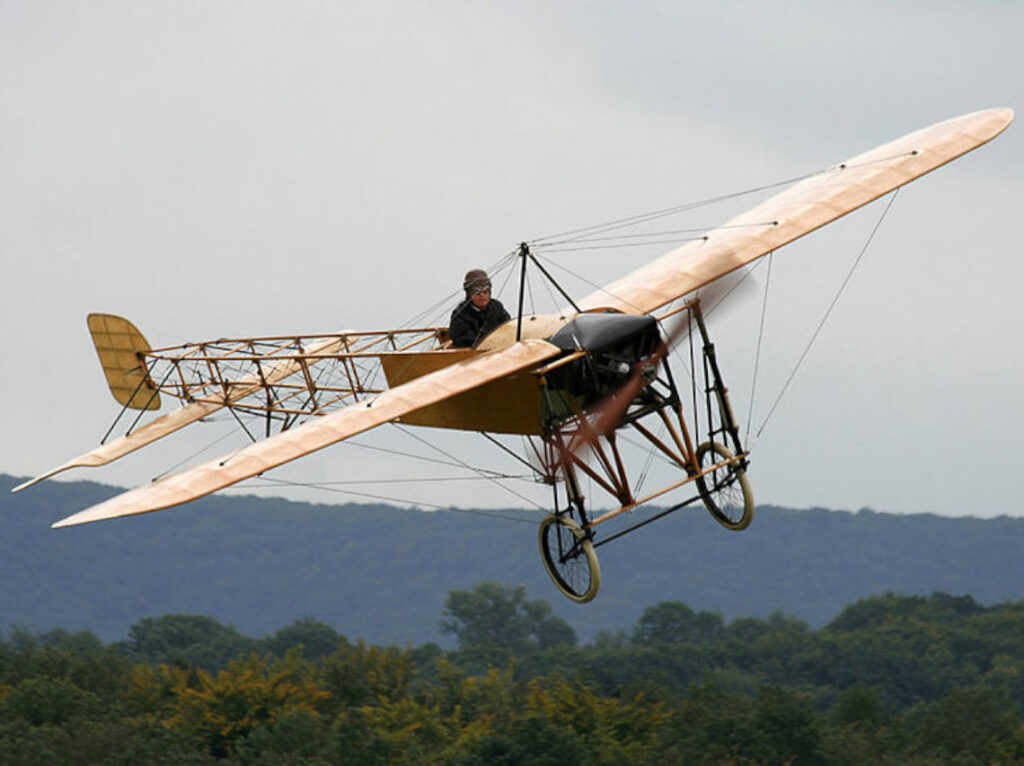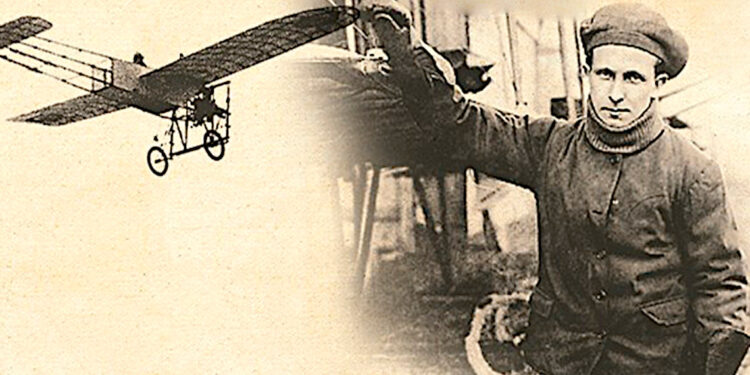On September 23, 1910, a man was preparing to undertake a feat that would not only challenge the technological limits of his time but also the bounds of human imagination. Jorge Chávez Dartnell, a young Peruvian aviator, stood at the Briga aerodrome in Switzerland with one goal in mind: to become the first man to fly across the Alps an achievement previously deemed nearly impossible. However, with bravery, determination, and an endless passion for aviation, Chávez soared into the skies, ensuring he would never be forgotten.
The Early Years of a Hero in the Making
Born in Paris on June 13, 1887, to Peruvian parents, Jorge Chávez grew up in a comfortable family that provided him with a solid education. Although he was born and lived most of his life in France, Chávez maintained a strong sense of identity with Peru, the country his parents left when they moved to Europe. From a young age, he displayed a fascination with machines and engineering, which eventually led him to study at the École d’Ingénieurs in Paris.
A pivotal moment in his childhood occurred when, at the age of ten, he gifted his mother a
drawing of an airplane with extended wings, proclaiming that he would one day build a machine
capable of flying higher than any other. This early vision of aviation shaped his character as both
a dreamer and someone determined to make his dreams a reality.
Chávez was also known for being an inquisitive and restless young man. During his
adolescence, he often conducted experiments with paper kites and model airplanes, which
sometimes landed him in trouble at school but also earned him the admiration of his peers. On
one occasion, Jorge constructed a small glider using recycled materials, fascinating his friends,
although it drew the disapproval of his teachers, who believed he cared more about his flight
projects than his conventional studies.
As the first decade of the 20th century progressed, aviation began to take off—literally. The
Wright brothers had completed their first flight in 1903, and the world was captivated by the
possibilities of flying machines. Jorge Chávez, with his adventurous spirit and passion for
engineering, was no exception. Despite the dangers of the still-developing field of aviation, he
resolved that his future lay in the skies. Throughout his childhood, youth, and early career as a
pilot, his guiding motto was clear: “Up, always up,” a phrase that encapsulated his ambition and
desire for achievement.
Throughout his childhood, youth and early career as a pilot, the motto that drove him was clear: “Up, always up,” a phrase that summed up his desire for improvement and ambition.
The Pilot Who Defied the Alps
The young aviator earned his pilot’s license in 1910 and quickly began to participate in air competitions and experimental flights. However, one challenge captured his imagination above all others: crossing the Alps, Europe’s most formidable mountain range, by airplane. This was a feat no pilot had achieved, and the technical difficulties and inherent dangers made it even more perilous.
Chávez chose to pilot a Blériot XI monoplane, a lightweight aircraft designed by aviation pioneer
Louis Blériot, who had gained fame the previous year for crossing the English Channel. The
Blériot XI featured a wooden and fabric fuselage, a wingspan of 7.8 meters, and a 50-
horsepower engine. Despite sounding primitive today, this aircraft represented the pinnacle of
aeronautical engineering in 1910. Nevertheless, the idea of flying through the heights of the Alps
in such a fragile structure seemed madness to many.

On September 19, 1910, Jorge Chávez arrived in Briga, Switzerland, ready to make history. In
his mind, it was clear: he was not only going to cross the Alps but also to demonstrate that
humanity could conquer the sky, surpass physical and technological barriers, and achieve
seemingly unattainable goals. “Up, always up,” his motto, was a constant reminder of his
ambition and belief that human effort could take him to the highest heights.
The Unforgettable Flight
On September 23, after several days of poor weather, conditions improved enough to allow the
flight. Jorge Chávez, in his Blériot XI monoplane, took off from Briga, headed for Domodossola,
Italy. The Alps, with their majestic peaks and unpredictable weather, posed a monumental
challenge. Chávez knew that altitude would be one of the biggest obstacles, as his aircraft was
not designed to fly that high, and mountain winds could be treacherous.
“Up, always up,” a phrase that reflected his desire to overcome any obstacle and reach new
heights, both in the air and in life.
As the Blériot XI ascended, the landscape below became increasingly awe-inspiring. The
mountains, covered in eternal snow, seemed to stretch toward the sky. Focused and
determined, Chávez maintained control of his aircraft, adjusting his course to avoid the most
dangerous air currents. He flew alone, relying only on his instincts, skills, and faith that his
machine would withstand the harsh conditions.
CHe crossed the highest point of the Alps, the Simplon Pass, at an altitude of about 2,200 meters.
The feat he was accomplishing at that moment was unprecedented: he was not only defying
nature but also the engineering limitations of his time. To any observer on the ground, it was an
impressive sight: a man and his plane, small against the colossal mountains, opening a new
chapter in aviation history.
The Tragic Fall and Immortal Legacy
After nearly two hours of flight, Jorge Chávez spotted Domodossola, his destination. He was
about to complete what no one had done before. But in the final moments of his descent, just as
the achievement seemed certain, the aircraft began to experience failures. It appeared that the
structure of the Blériot XI could not withstand the stresses of high-altitude flight for so long, and
as he approached landing, the wings of the monoplane folded. Chávez lost control, and the
plane crashed to the ground.
Severely injured, he was taken to the hospital in Domodossola. Despite the doctors’ efforts,
Jorge Chávez passed away four days later, on September 27, 1910, at the age of 23. Before he
died, reports say his last words were: “Up, always up.” Although his life was short, his legacy
endures.
The Significance of His Achievement
Jorge Chávez’s accomplishment was not just a technical achievement; it was a testament to
humanity’s ability to dream big, take risks, and push limits. His courage and determination made
him a pioneer of aviation, and his name is etched in history not only as the first man to cross the
Alps by airplane but also as an example of what can be achieved with passion and bravery.
For Peru, Jorge Chávez represents the adventurous and pioneering spirit of its people. Despite
being born in Paris and spending much of his life in Europe, Chávez always held a deep love for
Peru. His achievement in the Alps is viewed as a victory not just personally, but nationally. In
honor of his feat, the country’s main international airport bears his name: Jorge Chávez
International Airport in Lima, a symbol of how his legacy continues to resonate in the daily lives
of Peruvians.
Jorge Chávez is a source of inspiration and pride. His story resonates with those who, like him,
have left their homeland to pursue their dreams. Chávez demonstrated that, regardless of
borders, Peruvians have the capacity to achieve the impossible and leave an indelible mark on
the world.
The Blériot XI in which he flew has now become an icon in aviation history, and his flight is
remembered in aviation exhibitions and commemorative ceremonies in Peru and Europe. The
figure of Jorge Chávez, with his indomitable spirit, reminds us that the greatest dreams are
possible, even when they seem out of reach.
Jorge Chávez died young, but his legacy lives on. His audacity and determination continue to
inspire Peruvians to dream and reach for their goals, no matter how distant they may seem. “Up,
always up” is not just a motto but a way of life, a call for perseverance and the desire to soar
higher, just as this young aviator did over a century ago.




